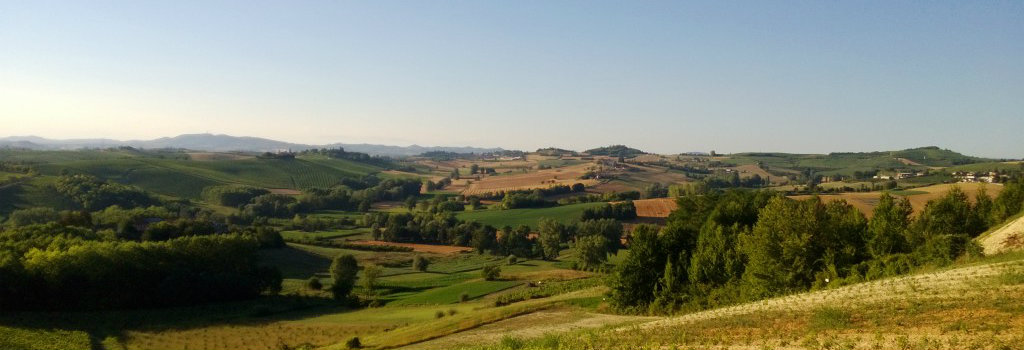
Posted on
A trip through the land of Ruchè
The Monferrato is a land waiting to be discovered. For years, it remained off the beaten track, known mostly by wine lovers who came from nearby to loot its wonderful wines, which they could find at much lower prices for great quality than in the neighboring Langhe.
Today, the Monferrato is rediscovering its tourism potential. Its beautiful hills, uncontaminated nature (still flourishing, compared to the deforestation trends of many surrounding areas), rich cultural heritage, and excellent cuisine give this region its ancient and authentic atmosphere that is still preserved today, despite tendencies towards conforming.
Starting with Castagnole Monferrato, here we recommend several unmissable destinations for a stay in the land of Ruchè—the heart of Basso, or “Low” Monferrato. These towns know how to enchant visitors like few other places in the world.
CASTAGNOLE MONFERRATO
“If someone in Castagnole Monferrato offers you Ruchè, it’s because they like you,” is written at the entrance of the capital of Ruchè, the symbolic wine of this zone. It was here in Castagnole that Ruchè was saved and then spread throughout the world. Tasting a glass of it is mandatory, as is a visit to our winery! Castagnole is an ancient village. Don’t miss a visit to the castle, whose walls create a medieval ricetto, or fortification, with its exposed brick walls and Gothic doors; the parish church of San Martino; and La Tenuta La Mercantile, a locale that hosts cultural events and, during the second weekend of May, the Festa del Ruchè.
PORTACOMARO
Another medieval village awaits just ten minutes from Castagnole. It’s Portacomaro, birthplace of the Bergolgio family of Pope Francesco. Portacomaro also has a medieval fortress, distinguished for its massive walls built in the 10-11th centuries. On the upper piazza are the parish church of San Bartolomeo and the City Hall. Not far is Via Degiani and its Romanesque church of San Pietro built in the 11th century with a beautiful brick and sandstone façade. And here’s an interesting fact: the name “Portacomaro” seems to come from the medieval gates where the women of the town habitually gathered to chat and gossip. “Porta delle comari,” or “door of the gossips/housewives” turned into “Portacomaro.”
MONTEMAGNO
Montemagno is located five kilometers north of Castagnole. A 10th century castle overlooks the town from atop a hill, next to a valley where the Gaminella Stream and Grana River run. Of particular interest in the historical center is the Baroque Parish Church, built in the 18th century and accessed by an impressive, monumental staircase climbing up three terraces. The church houses fine art and conserves a precious canvas by Pier Francesco Guala, a famous painter of the 1700s.
GRANA
This town is located on the peak of the hill to the right of the Grana River, from which it takes its name. Climb the hill until the Baroque Parish Church dedicated to Assunta. From here, enjoy a beautiful view of the Asti Monferrato territory and the Alps in the background. Grana is famous for a particular gastronomic specialty: stewed donkey meat and bean stew, or oubià, traditionally served in a bread bowl. Other traditional dishes of Montemagno can be tasted during the spring and autumn during Weekend Gastronomici organized by the Proloco associations.



